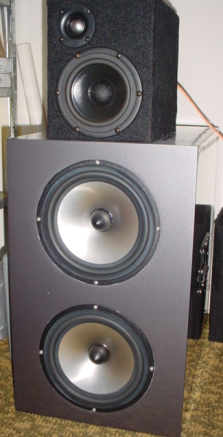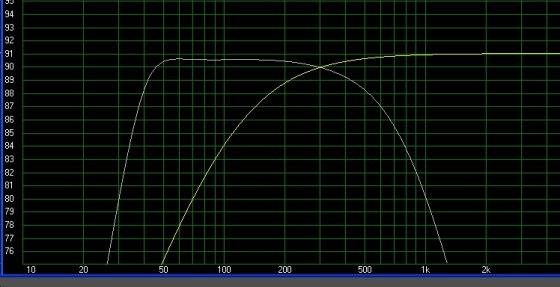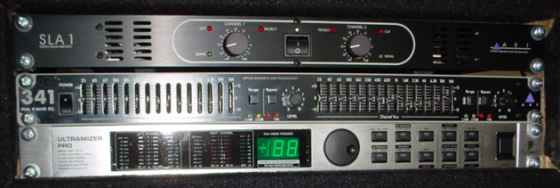Minirig V5 is a set of studio monitors. Iv’e used all low end audiophile components in the speaker boxes. The bass reflex boxes are 55 litres and made from 25mm mdf, they are internally braced and were spray painted and baked in an oven. They are tuned to 37hz using two 66mm ports in the back and are loaded with 2 x 8″ Seas L21RNX/P bass drivers. The mid-highs are 5 litre sealed boxes using a 5″ Seas MCA15RCY midrange driver and a 1″ Audax titanium/neodynium horn loaded dome tweeter, TM025F7. The crossover is 3 way 12db butterworth and there are no lpads as the drivers are all around the same efficiency (91db) The caps are all polypropylene. Crossovers at 500hz, 2.5khz.I choose to use the Audax TM025F7 as I wanted a tweeter that would sound close to what you would expect in a club. Clubs mainly use horn loaded aluminium compression drivers, this combined with techno or dance music is very hard to replicate using fabric dome tweeters, like you see in 90% of studio monitors in “pro sound” audio shops. If the monitors are to be used by someone making primarily techno music, best to have something that sounds similar to a club system, otherwise you may be shocked when you take your rehearsed live gig into the venue. This also dictated the 37hz tuning frequency for the bass reflex boxes. I chose to go 3 way and use the 5″ Seas MCA15RCY midrange because I needed something of similar efficiency that would fill the frequency range between the 8″ Seas bass drivers and the 1″ audax dome tweeter, also it sounded so damn good! The 5″ cone is very light, efficient and responsive.

The predicted response curves from bass and midrange drivers

The next picture is the rack that I use to power them with.

To get the setup to have a flat response and instead of messing around tuning with passive components I bought a secondhand ART 341 2 channel 15 band EQ. I use this in combination with a realtime spectrum analyser to tune the speakers into the room.
Next up is a Behringer Ultramizer Pro, this has a very flexible multi-band compressor and other digital signal processing tools. It’s very usefull for tuning a mix and predicting club compression levels.
The amp powering the whole thing is a ART SLA1. A solidly built piece of equipment, totally blows away any of the cheaper 1RU amps on the market.
